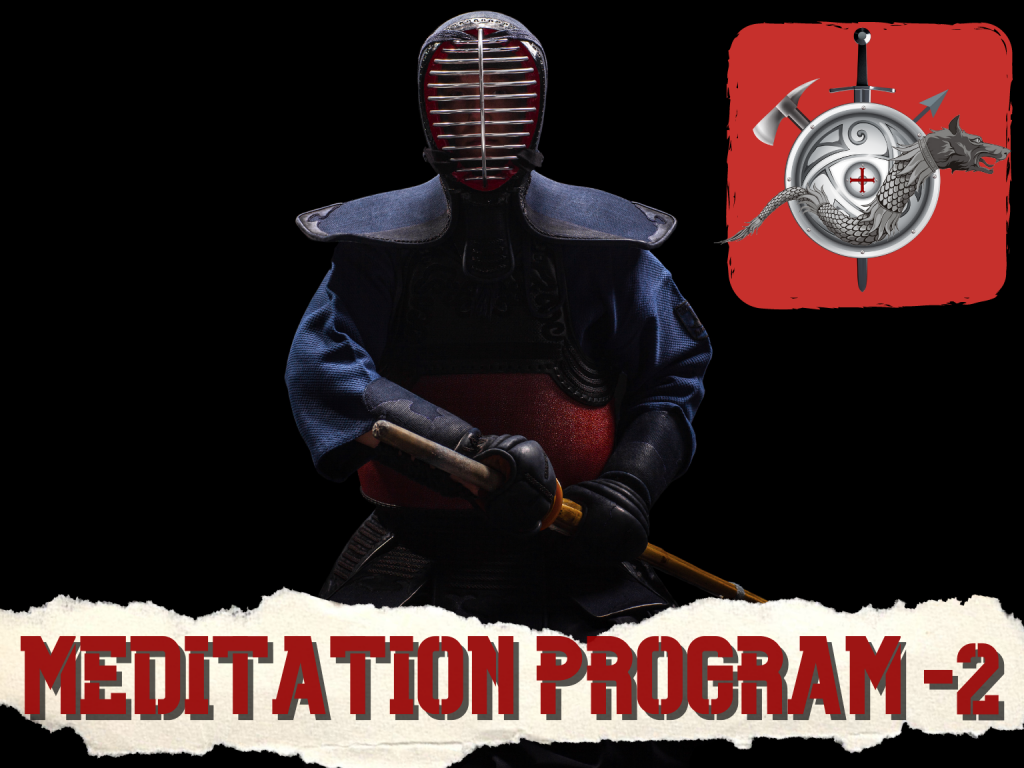Meditation Program – 2
We continue with part number 2 from the Meditation Program.
In this part we use a visualization method combined with a breathing technique.
It is very important to understand that breathing is playing an important roll for the warrior.
From ancient times until now breathing exercises were part of many disciplines from the yoga pranayama to taoist forms of breathing.
Today this is known in the warrior field as Tactical, or combat, breathing, a technique taught by the military, the police, and first-responders. And there’s increasing scientific evidence to back up the practice.
The idea behind it is simple: When you enter high-stress situations fight/flight/freeze, your sympathetic nervous system throws your body into overdrive. Adrenaline kicks in, your body starts to shake, fine motor skills are not operating at the same level, the tunnel vision is present, heart bits and breathing rate are increasing and your mind races to solve the problem.
It doesn’t just happen in war zones. Can happen in many situations when the sympathetic nervous system is activated. A car accident, or if you hate public speaking, it’s likely to happen before you get on the stage. If you’re nervous about an important exam, it may kick in as the timer starts. And many other examples.
Of course you can’t prevent this response by training your mind using the NLP (Neuro Linguistic Programming) or also using breathing exercises. It’s instinctual. Your brain’s three options are fight, flight, or freeze. And while you may know enough about yourself to know how you’ll react when you have an exam, you probably have no idea what your reaction will be during an active-shooter situation or a terrorist attack.
Normally in that state, you aren’t thinking logically, if you are thinking at all.
Tactical breathing overrides that stress response by activating the parasympathetic nervous system, slowing down your heart rate and calming you down so you can make a rational decision.
The technique is very simple but like all the things is requiring practice otherwise you will not remember this process when you already are in a life or death situation.
Breath air in for 3 seconds – Keep the air in for 3 seconds – Breath out the air for 3 seconds – Apnea for 3 seconds – Restart the cycle
Start for the first week with 20 cycles X 2/day, this can be one session in the morning and one in the night.
Then increase from the second week to 30 cycles X 2/day
Very important is that you begin to apply this technique in your daily activities when you fell that is a stressful situation, and try to identify what is happening in your body what effect has this breathing method.
As I said in a life or death situation fight, flight freeze your brain capacity to thing clearly is crucial but it will be difficult to apply this kind of method if you didn’t practice.
A very good method is to use the NLP Neuro Linguistic Programing visualization techniques to create scenarios and program your brain to have the best response. All this combined with the breathing method. So I create in my mind a scenario, let’s say an active shooter situation, using the visualization process and the 4 main questions What I SEE ? What I FEEL? What I HEAR ? and What I SMELL. By fallowing this elements you will be able to construct a strong visualization scenario. Hearing your own breath, the noises, gunshots, screaming. Felling the warm blood, smelling the smoke from the gun powder and so on. In all this time being also aware of your changes that happen in your body( heart bits and respiration are increasing, muscles shacking, sweating, tunnel vision. This is the moment in which you must implement the breathing process that I was telling you about. Of course this is applying when the time and situation are permitting you. And of course you continue with the scenario that you want how I was telling you in the NLP post. If you have a sudden attack with a knife from 2 meters when you are in a relax state of mind, is logical that you don’t stay in that moment to focus on ”how it was the breathing technique that I must do?”
Normally this method requires a lot of practice until is becoming part of the subconscious.
Once your mind is calm, you can make a rational decision about whether it is best to hide( be careful how you hide; if you are hiding in a position for example under a table or a desk, you will be the perfect victim because that posture is not permitting you to fight back) or whether you need to run, or fight rather than flailing in panic.


